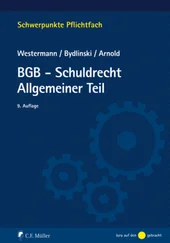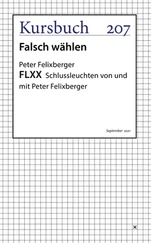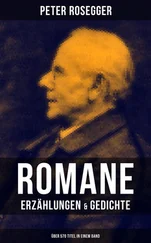Lauren saw that they were no more than thirty yards from the end of the bridge. The only way to get there was a narrow catwalk that ran along the side of the superstructure. Used for maintenance, it extended over the river. They’d have to climb over the outer railing and step down to it.
“I can’t do this!” Bobby cried.
“Sure you can,” Lauren said. She climbed over the railing and, with her back to the water, lowered herself a few feet onto the slippery catwalk. She helped her grandson down. The catwalk was open to the water. A single handrail was bolted to the side of the superstructure.
Lauren looked up at the patrol car. The lights were still on. Then the bridge lurched and the car started sliding toward the gap in the roadway.
Gripping the railing with one hand and her grandson with the other, Lauren watched as the car fell through the opening and disappeared in the churning water below them.
“Keep going!” she told Bobby. “Don’t look down!”
With their backs to the river and holding on to the wet handrail, they slowly sidestepped their way down the catwalk.
Something large hit one of the supports, which shuddered at the impact. Lauren saw what had caused it—part of an electric tower swept downstream by the flood. At least fifty feet long, it was dragging its tangled wires behind it.
The jolt of the collision almost knocked them into the river. One of Bobby’s feet slipped off the catwalk, and he fell down on his knees. Lauren grabbed him by his belt and pulled him back up.
After they inched their way past the gap in the roadway, they climbed back up on the bridge and started running toward the end. Lauren felt the pilings move under them.
“Hurry, boy!” she shouted to her grandson.
They had another ten yards to go.
Another five.
They’d almost reached the end when the roadway started to pull away from the approach ramp.
“Jump!” Lauren screamed. Her lungs ready to burst, she put an arm around her grandson, who’d started to lag behind. She shoved him hard just as the deck gave way beneath them. Their momentum carried them forward. She landed on top of Bobby on the approach ramp, skinning her knee.
She lay next to him, gasping for breath, staring at the sky. She reached over and squeezed her grandson’s hand. She’d come so close to losing him. A matter of inches. They’d been so lucky. She closed her eyes and started to cry, the tears stinging her cheeks in the cold air. She loved and needed Bobby so much. She’d lost her husband and survived. If she lost her grandson, she wouldn’t want to go on living. She realized she and the boy were in the fight of their lives. As she lay there, still holding his hand, afraid to let go, she swore to herself that no matter what happened he was going to come out of this alive.
Bobby sat up.
“It’s going!”
Lauren pulled herself to her feet just as the bridge broke into three sections and started to lean toward the water. The surging flood knocked it over. A single concrete support at the middle was all that remained standing. Part of the superstructure lay on its side, still visible. A mobile home washed downstream was impaled on one of the steel girders. So was the smashed wall of a frame home.
“Look over there!” Bobby said, pointing toward downtown Paducah and the Ohio River. Just below Owen’s Island, where the river narrowed slightly before it swung by the city, the fire had spread from shore to shore.
More fires had broken out in the Lowertown district.
Lauren had little time to worry about Paducah. They needed to get off the elevated approach ramp, which was supported by steel trusses. She wanted to be clear of it before the next aftershock hit.
She started down the sloping incline with her grandson when a car pulled onto the ramp and started in their direction.
“Stop!” Lauren screamed, waving her hands over her head. “The bridge is out! Go back.”
The car kept coming. It had its high beams on and was headed straight toward them.
NEAR CARUTHERSVILLE, MISSOURI
JANUARY 13
4:55 A.M.
ATKINS PARKED THE EXPLORER ON A GRAVEL landing that overlooked the Mississippi. It had been a little over two and a half hours since the earthquake. The aftershocks had been frequent, some of the jolts very strong. Most were in the magnitude 6 range, Atkins figured. He and Elizabeth got out of the vehicle and took their first look at the river. It was a good two miles wide. And, incredibly, running backward.
The spectacle was beyond anything in his experience. He was reminded again of the immense power of a natural force strong enough to breach one of the biggest rivers in the world. Cut right across it!
Atkins guessed that the fault line had broken through the surface somewhere downstream, creating a barrier or hanging wall that was causing the river to back up. That very thing had happened during the sequence in 1811-1812. The tremendous uplift of one of the monster quakes had blocked the flow with several barriers that sent the river roaring backward.
And somewhere out there, it may have also created a waterfall.
They couldn’t see it. Atkins remembered what Walt Jacobs had told him about the history of the big quakes in 1811-1812: the fault’s uplift had formed a roaring waterfall, possibly two of them in mid-channel.
As he stared into the darkness upstream, Atkins’ eyes began to play tricks on him. The only thing he could make out clearly were the steel girders of the fallen bridge. The twisted superstructure jutted out of the river.
Atkins didn’t see a waterfall and began to wonder if the troopers were wrong.
“Can you hear it?” he asked Elizabeth.
She shook her head. The rushing water and wind merged into a shrill background noise.
While they were trying to figure out what to do next, another radio transmission arrived from Memphis. It was Jacobs. The hiss of static made it difficult to understand him. There was a lot of ground interference. Then the noise cleared up.
“Arkansas State isn’t sending anyone to the epicenter,” Jacobs said. “A lot of buildings are down there. They can’t get to the equipment.” There was another long burst of shortwave static.
Atkins sat in the Explorer, staring out at the river. He didn’t know what to say. His mouth was suddenly dry.
“John, I don’t know what to tell you to do.” It was Jacobs again. The transmission was starting to break up. “Use your… judgment.”
The radio kept crackling with static. Atkins reached behind him and turned down the volume.
“I’ve got to try to cross the river,” Atkins said, looking at Elizabeth. “We’ve got to get a seismograph up and running.” He pounded his fist against the dashboard. “Look at that water out there!”
“Maybe we can get the ferry to take us across,” Elizabeth said.
“Forget the ‘we,’” Atkins said. “You’re not going.”
Elizabeth shook her head. “It’s not up for discussion,” she said sharply. “We’re both going.”
“Dammit, no way,” Atkins said, pounding the dashboard again.
Elizabeth hit the dash just as hard. “Dammit, yourself!” she shouted. “Don’t play mas macho with me, Doctor Atkins.” Her eyes were flashing.
Atkins remembered the mistake he’d made with Sara. He’d blamed himself for years for letting her go with him into that heavily damaged building in Mexico City. He should have insisted she stay outside, forced her if necessary. They’d taken a huge risk together, and lost. He didn’t want it to happen again, but he understood he was powerless to stop Elizabeth from coming with him.
Atkins sat there a few moments, trying to collect himself. “All right,” he said softly. “I wish to God I could make you change your mind, but all right.”
Читать дальше












